Landscape Depth of field
Take advantage of every season to photograph gorgeous landscapes with a deep depth of field.
Landscapes are one of the most popular subjects in photography. The genre requires a rigorous approach. You have to compose your image with precision, look for the most beautiful light around dusk or dawn, and imagine how an everyday landscape might be transformed by the right lighting and atmosphere.
The Landscape scene mode on your DxO ONE lets you photograph large areas with a deep depth of field. This mode also slightly saturates colors for an optimal result.
In the advanced settings menu, shoot in aperture priority (A) mode for maximum sharpness by closing the diaphragm. For a well-exposed photograph, you might have to adjust the exposure if the subject is too dark or too light. This setting is graduated in steps of one-third stop.
In full manual (M) mode, the exposure measurement will appear on a small graduated ruler. The cursor is set on zero by default, which represents the middle value on the scale. Apply a –2/3 correction to make a mountain landscape even more beautiful with the addition of a bright blue sky.
You can display the exposure level ruler in all other modes by dragging down the screen.
(Photographer Andrea Bagnasco)
To focus to infinity, set a focal point that’s very far away by tapping on the screen on your smartphone in AF-S or AF-OD mode. You can also select manual focus mode (M) and move the cursor to the top of the scale.
You can keep the white balance setting on automatic. If the sun is strong, switch to the Daylight setting for a warmer finish.
In the settings options select the matrix/multi-zone measurement, which is designed to provide even exposure throughout the image.
In landscape photography, each season comes with its own unique characteristics:
-
In the spring, the days start to become longer and there’s more light. Trees blossom and the landscape is subtle and soft. Take advantage of this time of the year to photograph specific details. The weather is often difficult to predict during this time and rain showers are common; this can be an advantage when photographing landscapes. At the end of the day, the sun is often covered up by clouds, producing gorgeous sunsets. Try photographing rays of sunlight filtering through the clouds by slightly underexposing your image to emphasize the effect.
-
In the summer, harsh, intense sunlight creates high-contrast images. Landscapes are hard to photograph at this time of year. Long morning shadows become shorter, turn harsh around noon, then become long again near the end of the afternoon. It’s best to shoot in the early morning or around dusk in the summer. The main advantage of photographing in the summer is the amount of daylight you have to work with.
-
In the fall, landscapes in some places take on a colorful mix of orange, red, and yellow for a brief period. Using the Optical Adapter accessory, place a polarizing filter in front of your DxO ONE’s lens to play up the contrasts between the colorful foliage and the sky for stunning photos at this time of year.
-
In the winter, the light is weaker. Because you’ll have to increase the exposure time, you’ll probably need to use a tripod to avoid having to increase your sensitivity levels. Winter light is cool with bluish overtones. Sharply angled light emphasizes textures, resulting in graphic, tone-on-tone images. If the sky is cloudy, the photo will almost look monochromatic.
When framing your image, pay close attention to the horizon line for a more balanced composition. You can use the composition grid for extra help. Just drag your finger towards the bottom of the screen to display it.
(Photographer Florence AT)
Low-angle shots are often used in landscape photography to emphasize perspectives, especially the lines created by a railroad or by trees. If your DxO ONE is connected to your smartphone, pivot the phone so you can shoot without having to bend down.
(Photographer Florence AT)
Move so the shadows cast by the sun will direct the viewer’s eye where you want it.
You can place a subject in the foreground of the landscape for added depth and to create a sense of scale.


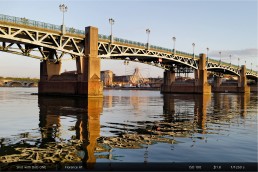
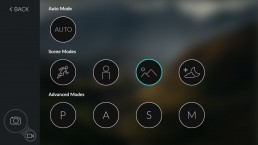
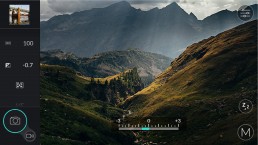

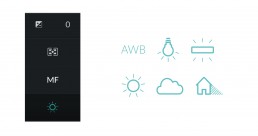

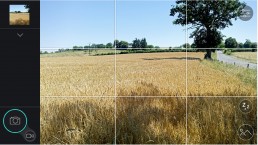
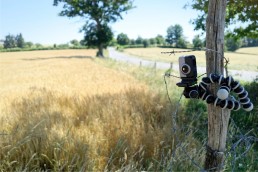
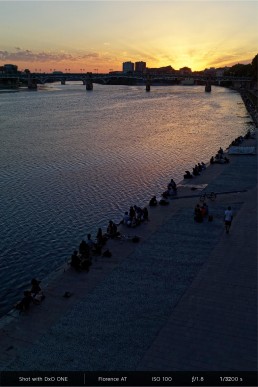
 Download page
Download page